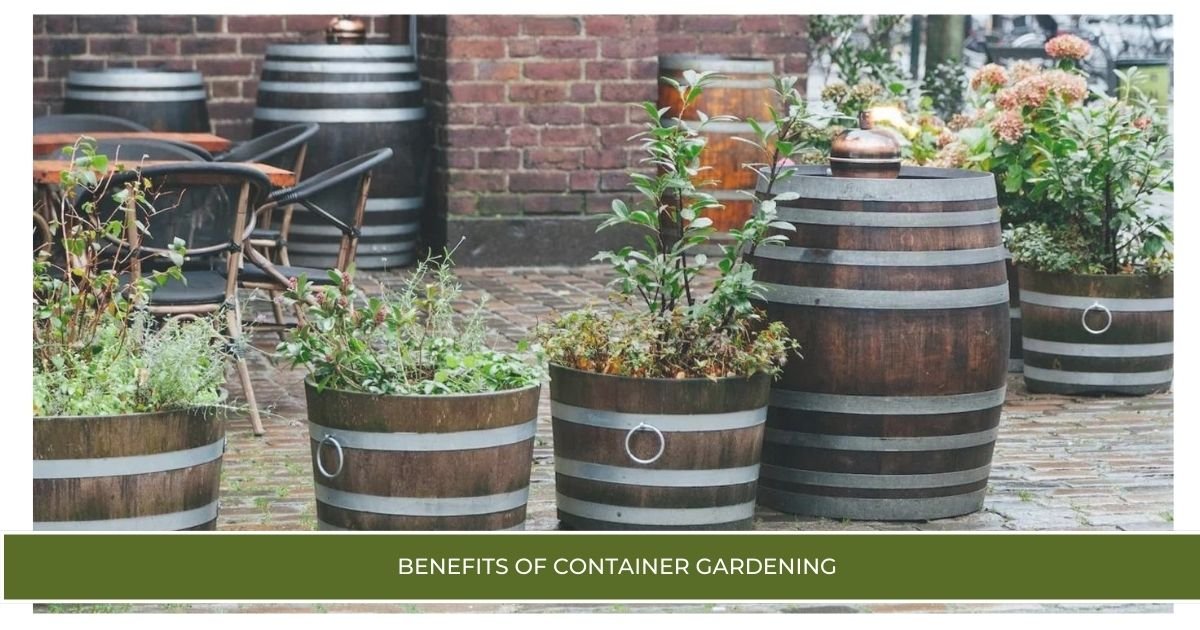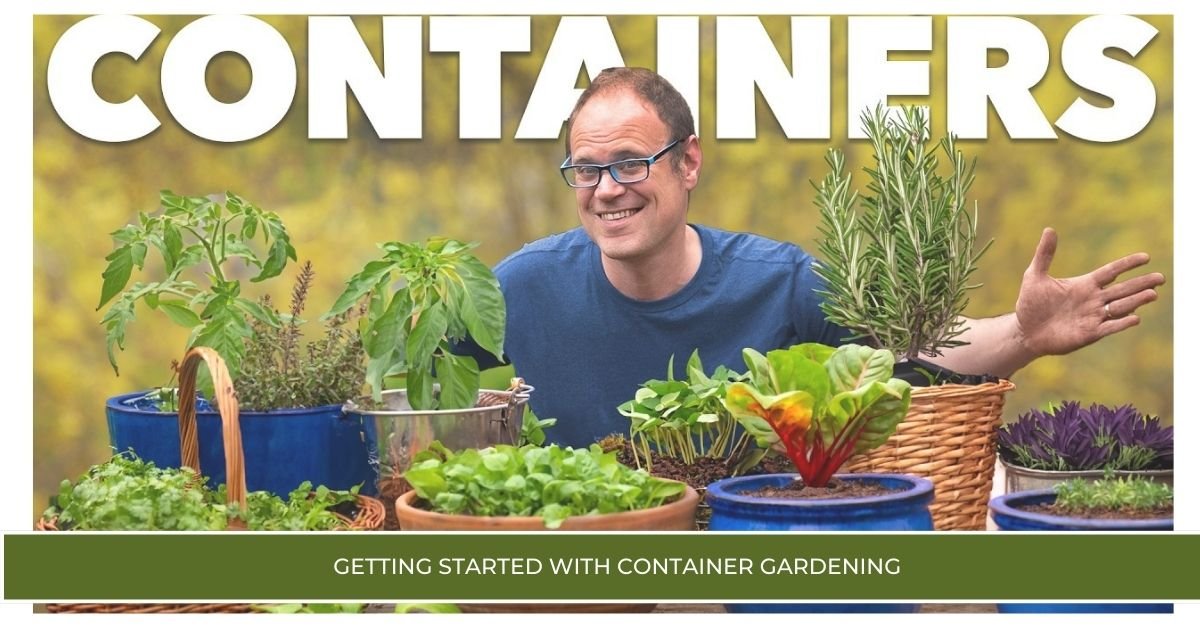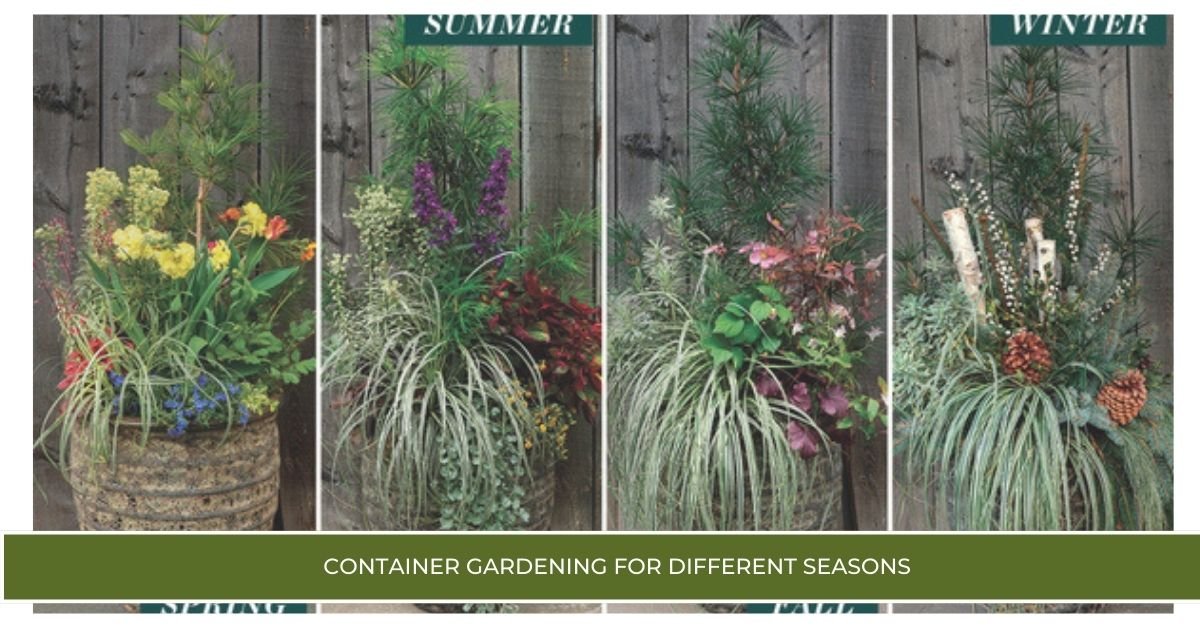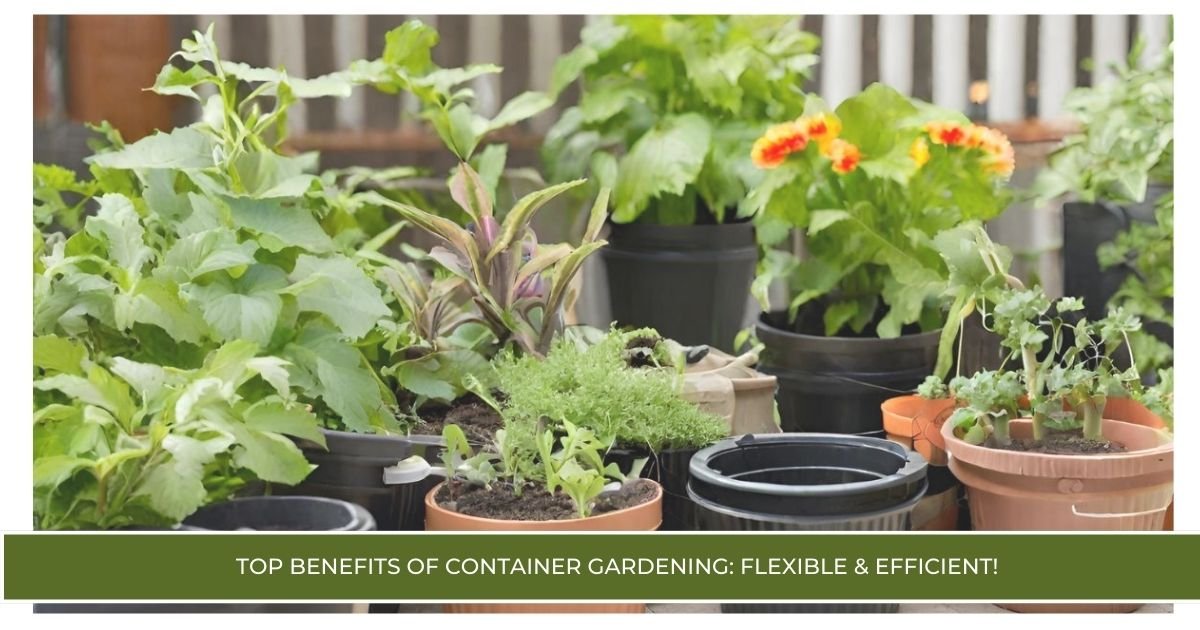Top Benefits of Container Gardening: Flexible & Efficient!
Container gardening is a wonderful way to grow plants even if you have limited space. Whether you live in a small apartment or have a large backyard, container gardening allows you to cultivate a variety of plants in portable containers. This guide will explore the numerous benefits of container gardening, provide creative ideas to get started, and offer practical tips to help your garden thrive. Let’s dive into the world of container gardening!
What is Container Gardening?
Container gardening involves growing plants in containers instead of planting them directly in the ground. These containers can be anything from traditional pots and raised beds to more inventive solutions like hanging baskets and vertical planters. Container gardening has a rich history and has evolved to become a popular way to garden in modern times.
Types of Containers
- Pots: The most common choice, available in various sizes and materials.
- Raised Beds: Ideal for larger plants and vegetables.
- Hanging Baskets: Great for decorative plants and small herbs.
- Vertical Planters: Perfect for maximizing space in small areas.

Benefits of Container Gardening
Accessibility
One of the greatest benefits of container gardening is its accessibility. You can grow plants anywhere – on a balcony, a patio, or even a windowsill. This makes gardening possible for people living in urban areas or apartments. Additionally, container gardening is ideal for those with limited mobility since containers can be placed at a height that reduces the need to bend or kneel.
Flexibility
Containers are portable, so you can move them around to suit your needs. This flexibility allows you to position plants in the best spots for sunlight and weather conditions. You can bring plants indoors during harsh weather or move them to catch more sun as the seasons change.
Soil and Pest Control
Container gardening offers better control over the soil and pests. You can choose the perfect soil mix for each plant, ensuring they get the nutrients they need. Containers also reduce the risk of soil-borne diseases and pests, creating a healthier environment for your plants.
Water Efficiency
Watering is more efficient with containers. You can target the water directly to the plant roots, reducing waste. Containers also require less water overall compared to traditional gardens, making them a more sustainable choice.
Economic Benefits
Growing your own food can save money on groceries. Container gardening allows you to cultivate a variety of herbs, vegetables, and fruits right at home. Starting with DIY or upcycled containers can also reduce costs while adding a personal touch to your garden.
Aesthetic and Therapeutic Value
Container gardens can enhance the beauty of any space. Whether you choose vibrant flowers, lush foliage, or elegant succulents, the aesthetic value is undeniable. Gardening also has therapeutic benefits, such as reducing stress and improving mental health.

Container Gardening Ideas
Edible Gardens
Growing your own herbs, vegetables, and fruits in containers is both practical and rewarding. Some popular choices include:
- Tomatoes: Easy to grow in pots.
- Peppers: Thrive in containers.
- Lettuce: Perfect for small spaces.
- Strawberries: Great for hanging baskets.
- Herbs: Basil, mint, and rosemary grow well in small pots.
Ornamental Plants
Flowers, succulents, and cacti are excellent for container gardening. Consider creating a vibrant flower garden with petunias, marigolds, and pansies, or a low-maintenance succulent garden with aloe vera and echeveria.
Themed Gardens
Create specialized gardens tailored to your interests:
- Kitchen Garden: Grow culinary herbs and vegetables.
- Sensory Garden: Plant fragrant flowers and herbs for a sensory experience.
- Balcony Garden: Use vertical planters and hanging baskets to maximize space.
Creative Containers
Think beyond traditional pots. Upcycle materials like old tires, crates, and cans to create unique containers. Designer pots and custom-made planters can also add a stylish touch to your garden.

Getting Started with Container Gardening
Choosing the Right Containers
Select containers based on material, size, and shape:
- Material: Plastic, clay, and ceramic each have their pros and cons. Plastic is lightweight and durable, clay is breathable but can dry out quickly, and ceramic is aesthetically pleasing but heavier.
- Size: Ensure the container is large enough for the plant’s root system.
- Shape: Choose shapes that complement your space and plants’ needs.
- Drainage: Ensure containers have adequate drainage holes to prevent waterlogging.
Selecting Soil and Plants
Choose high-quality potting soil mixes designed for container gardening. Look for soil that retains moisture but drains well. Select plant varieties that suit your climate and the conditions of your gardening space.
Planting and Maintenance
Follow proper planting techniques to ensure your plants have enough space to grow. Regularly water, fertilize, and prune your plants to keep them healthy. Here are some tips:
- Watering: Check soil moisture regularly. Water when the top inch of soil feels dry.
- Fertilizing: Use a balanced fertilizer every few weeks during the growing season.
- Pruning: Remove dead leaves and stems to encourage new growth.
Common Challenges and Solutions
Overwatering: Use containers with good drainage and check soil moisture before watering.
Underwatering: Ensure plants receive enough water, especially during hot weather.
Pests and Diseases: Monitor plants regularly and use organic solutions like neem oil or insecticidal soap to manage pests.

Container Gardening for Different Seasons
Spring
Spring is the perfect time to start many plants. Consider planting early vegetables like peas and leafy greens. Ensure your plants get plenty of sunlight as the days grow longer.
Summer
Choose heat-tolerant plants such as tomatoes, peppers, and marigolds. Water your containers more frequently to combat the summer heat and prevent soil from drying out.
Fall
Opt for
autumn-friendly plants like kale, pansies, and chrysanthemums. Prepare for cooler weather by moving containers to sheltered spots if necessary.
Winter
Overwintering plants can be challenging but possible with the right care. Bring sensitive plants indoors and use indoor container gardening to keep your green thumb active during the colder months.

Eco-Friendly Practices in Container Gardening
Sustainable Materials
Use biodegradable pots and eco-friendly soil options to minimize your environmental impact. Consider materials like coconut coir or peat-free compost.
Water Conservation
Implement drip irrigation systems or collect rainwater for your container garden. These methods help conserve water and ensure your plants get the moisture they need.
Organic Gardening
Avoid chemical fertilizers and pesticides. Use organic alternatives like compost, mulch, and natural pest repellents to maintain a healthy, eco-friendly garden.
Conclusion
Container gardening offers a world of possibilities, allowing anyone to cultivate a green space regardless of their living situation. By understanding the benefits, exploring creative ideas, and following best practices, you can enjoy the beauty and rewards of container gardening year-round. Start your container garden today and experience the joy and satisfaction of growing your own plants.
FAQs
What are the benefits of container gardening?
Container gardening offers accessibility, flexibility, enhanced soil and pest control, water efficiency, economic benefits, and aesthetic and therapeutic value.
What are some creative container gardening ideas?
Consider growing edible gardens, ornamental plants, themed gardens, and using creative containers like upcycled materials and designer pots.
How do I start a container garden?
Choose the right containers, select suitable soil and plants, follow proper planting and maintenance techniques, and address common challenges like overwatering and pests.
What plants are best for container gardening in different seasons?
- Spring: Peas, leafy greens
- Summer: Tomatoes, peppers, marigolds
- Fall: Kale, pansies, chrysanthemums
- Winter: Indoor herbs, overwintering perennials
How can I make my container garden eco-friendly?
Use sustainable materials, conserve water through drip irrigation and rainwater harvesting, and practice organic gardening with natural fertilizers and pest control methods.
By following these guidelines and utilizing the provided tips, you’ll be well on your way to creating a successful and enjoyable container garden. Happy gardening!
